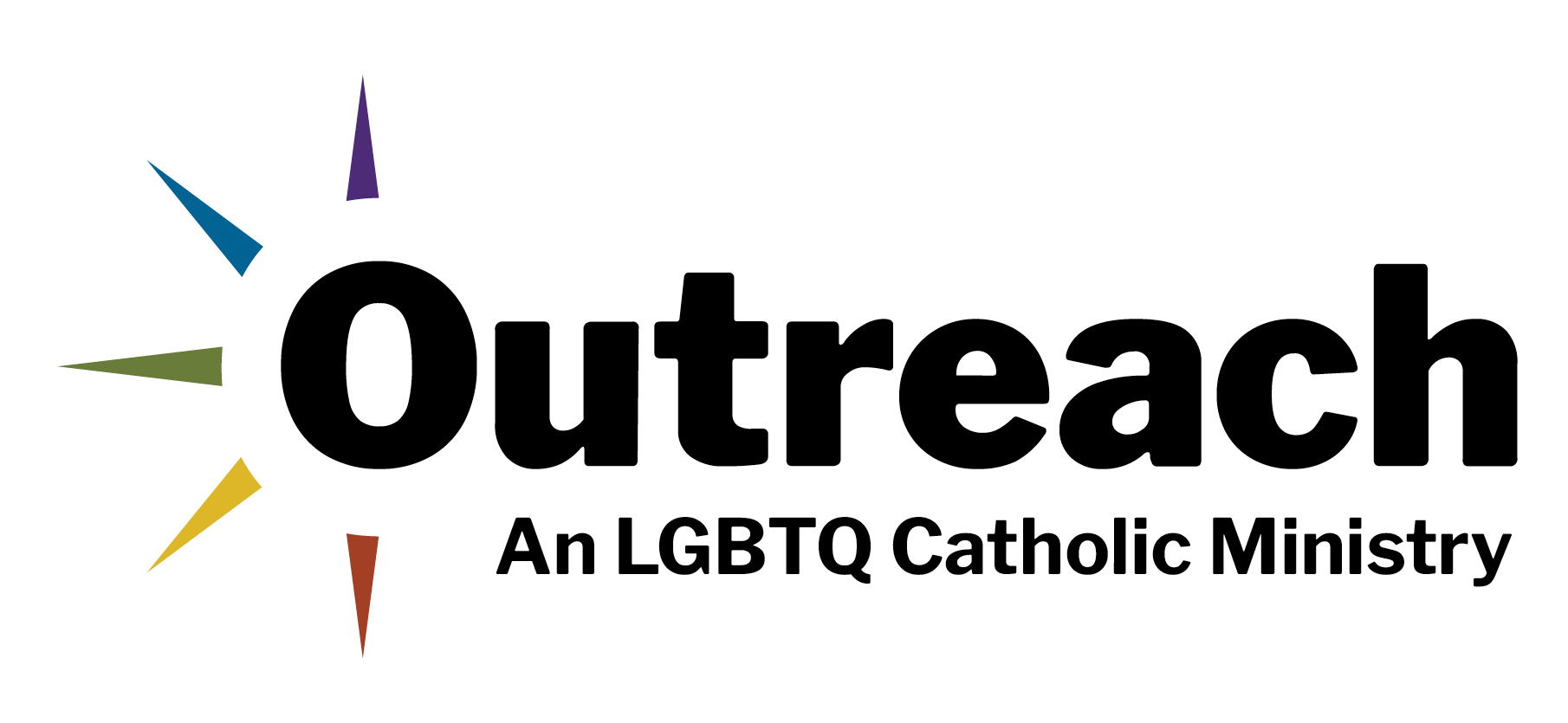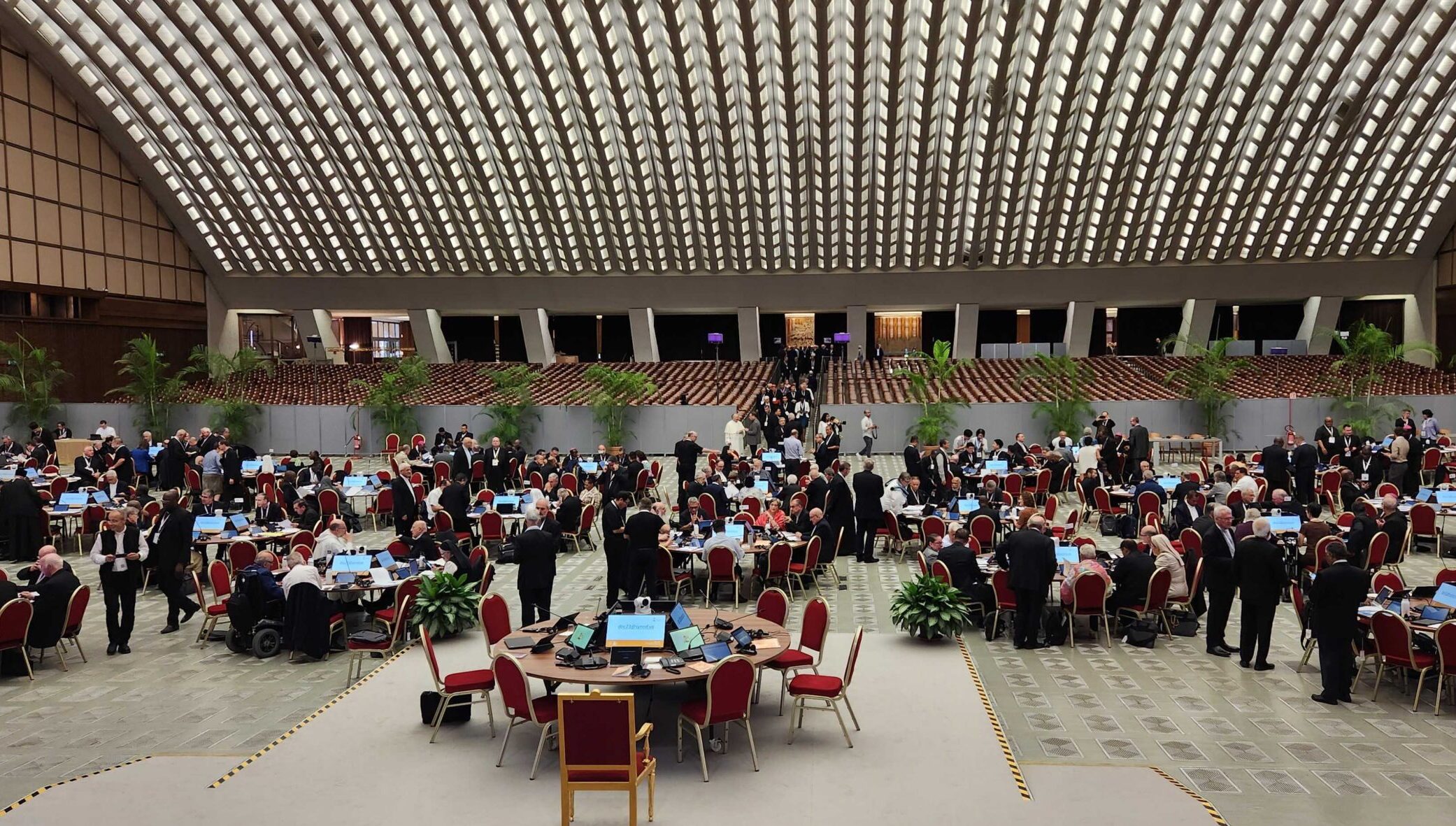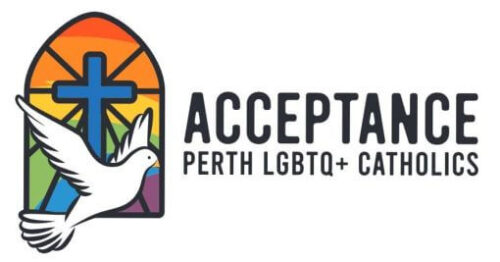More than 360 participants of the Synod on Synodality are currently meeting in Vatican City, opening the first part of the gathering’s universal phase. (Outreach editor James Martin, S.J., is a member.) While it is unclear what specific topics may be addressed by the Synod this month, certain questions have emerged from two years of global listening sessions. One of the questions is extraordinary: “What concrete steps are needed to welcome those who feel excluded from the church because of their status or sexuality?”
It’s not just the question that is remarkable, but what follows: The document specifically names “LGBTQ+” people. Using this abbreviation is historic because the church has long persisted in an argument against these letters and their variations, at times denying that LGBTQ people, described as such, even exist.
The argument can be traced to a 1986 letter written by then-Cardinal Joseph Ratzinger and issued by the Congregation (now Dicastery) for the Doctrine of the Faith, titled On the Pastoral Care of Homosexual Persons. “The human person, made in the image and likeness of God, can hardly be adequately described by a reductionist reference to his or her sexual orientation,” reads the document (16).
The church has long persisted in an argument against these letters and their variations, at times denying that LGBTQ people, described as such, even exist.
In essence, the document finds it inappropriate to designate a person as LGBTQ, thereby describing them by their sexuality. But this thinking erases gay and transgender people by stating that a person cannot be defined by their deeply-held feelings or attractions.
This claim really took hold in Catholic circles in the late 1990s, influenced in part by the language of the ex-gay movement. At the time, two prominent Catholic voices against LGBTQ language were the psychiatrist Richard P. Fitzgibbons and John F. Harvey, O.S.F.S., who founded Courage in 1980 for Catholics experiencing “same-sex attraction.”
In 1996, Fitzgibbons proposed that homosexuality was the result of overwhelming feelings, like sadness, loneliness, mistrust and narcissism. He characterized it as an “attempt to flee from an excessive sense of responsibility, sexual trauma in childhood and anger.” Homosexual attraction, he theorized, could be healed through engaging cognitive behavioral therapies, addressing anger issues and appealing to Catholic spirituality.
Fitzgibbons suggested that—with enough spiritual direction, penance and self-control—a person could overcome homosexual feelings and attractions. “The choice of words is very important,” he wrote. “The term sexual orientation [is] scientifically inaccurate. … The word implies a type of biological determinant, something fixed. My clinical experience contradicts this.”
The church permits us to use words like “gay” and “lesbian” to describe personal identities—as long as those words are meant to enhance (and not replace) a person’s “fundamental identity.”
“Orientation is a strong word,” Father Harvey said in November 1998. “It means you are homosexual. You’re oriented that way, as a compass is oriented toward north, and that’s the way it is. The word ‘attraction’ leaves room for change because our attractions come and go.”
Father Harvey advised parents to discourage their children from identifying as gay or lesbian, arguing that such terms placed undue emphasis on their sexual identity. He believed these words insisted “that the most important thing about them is their homosexual orientation.” Consequently, the phrase “same-sex attraction” emerged.
LGBTQ persons and allies saw this language as an unwelcome semantic shift. Not only is “same-sex attraction” a mere replacement label, often abbreviated SSA, but it is frequently used to label those with same-sex attraction—as if LGBTQ persons have a clinical disorder.
Here is the critical point in this debate. A correct reading of the Vatican’s 1986 pastoral letter “provides a badly needed context for the care of the human person when [the church] refuses to consider the person solely as a ‘heterosexual’ or a ‘homosexual’ and insists that every person has a fundamental identity” as a child of God (16).
Yes, the presence of Jesus is found in queer bodies. LGBTQ people do exist in the Body of Christ.
The word “solely” is absolutely necessary here (see the Latin version). The church permits us to use words like “gay” and “lesbian” to describe personal identities—as long as those words are meant to enhance (and not replace) a person’s “fundamental identity” as wonderfully made in the image and likeness of God. This is not an argument or an ideology. It comes from a simple reading of the text.
Nearly four decades later, the synodal process has brought the truth to light. It’s okay to say “gay.” Now, this can be brought forth like an offertory gift, for through God’s goodness, we receive you. The Lord has accepted your sacrifice. “You are noticed,” says the church. “We see you, and you belong here.” Your gifts may now be shared—for our good and the good of all God’s holy church.
Let’s pause to honor this historic shift. The church has listened to the voices crying out from the wilderness. Yes, the presence of Jesus is found in queer bodies. LGBTQ people do exist in the Body of Christ. Indeed, the choice of words is very important.




